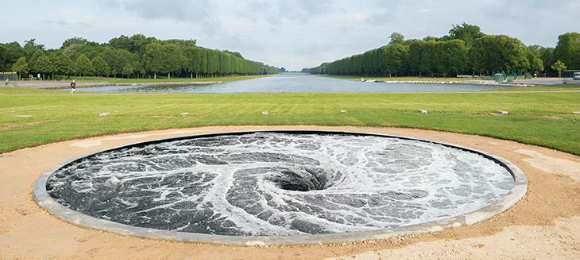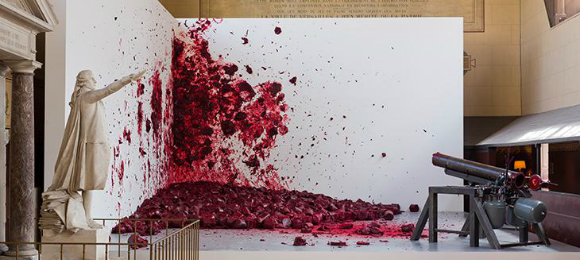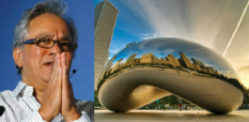“The point is to create a dialogue between these great gardens and the sculptures.”
World-renowned British Indian sculptor, Anish Kapoor, has come under fire for one of his provocative displays at the historic Versailles Palace in France.
Titled ‘Dirty Corner’, the sculpture initially appears to be nothing more than a 60-metre long metal funnel surrounded by big rocks.
But it caused uproar when Anish reportedly told the French newspaper, Journal du Dimanche, that it symbolised ‘the vagina of the queen coming into power’.
Though the Turner Prize-winning sculptor did not specify names, many believe the reference was made to the famous Queen of France and Navarre – Marie Antoinette.
The fact that the opening of the funnel faces directly at Versailles Palace angered the French even more, if the sculpture indeed represents the controversial Queen’s vagina.
The Mayor of Versailles, François de Mazières, expressed his disapproval of ‘Dirty Corner’ in a tweet that loosely translates into ‘Anish Kapoor slips up’:
#versailles, Anish Kapoor dérape sur le tapis vert.
— François de Mazières (@FdeMazieres) June 3, 2015
Robert Ménard, the mayor of the southern French town of Béziers, also disliked Anish’s artwork and accused him of using modern art to ‘deface’ cultural heritage:
https://twitter.com/RobertMenardFR/status/605641199647490049
The horn-shaped sculpture seemed to have upset some tourists, as Megan from the US said: “When you think you’re coming to Versailles you’d expect like classic French, maybe a big statue of some Roman god, but this just seems dirty, gross.”
But not all found ‘Dirty Corner’ to be of poor taste. Les Inrocks, a French cultural magazine, apparently wrote that the negative reaction mainly came from the far-right and praised Anish for embracing ‘French power and identity’.
The Financial Times described the steel monument as ‘an erotic, feminised disruption to Le Nôtre’s (Versailles garden architect) masculine rigidities and tamed harmonies of lawn and hedge’, that challenges the status quo of nature.
The honorary graduate of the University of Oxford later told the media that he could not recall making the statement, but acknowledged he had made some sexual references.
Anish said: “I don’t remember saying it…I don’t see why it’s problematic. The point is to create a dialogue between these great gardens and the sculptures.”
Speaking to the New York Times, he further explained the concept behind his latest artwork.
He said: “It’s exactly the opposite of Le Nôtre. This whole place, every tree, every bush is ordered, geometrical, formalised, almost as if it’s hiding nature.
“And ‘Dirty Corner’ is like a big queen sitting in court, displaying herself to her courtiers, completely chaotic.”
But the world famous sculptor insists it has ‘multiple interpretive possibilities’ and its sexual connotation is ‘certainly not the only thing it is about’.
Anish follows in the footsteps of American artist Jeff Koons and Japanese artist Takashi Murakami in displaying his artwork at Versailles, which began partnering with contemporary artists in 2008.
Over the past two decades, he has gained critical acclaim for his monumental pieces, such as Taratantara at the Baltic Centre and the Orbit created for the 2012 London Olympic Games.
‘Dirty Corner’ is part of Anish’s six-piece sculpture exhibition that opens at Versailles from June 9 to November 1, 2015.
Other stunning pieces installed at the popular tourist site are ‘C-Curve’, ‘Sky Mirror’, ‘Descension’, ‘Shooting Into the Corner’ and ‘Sectional Body Preparing for Monadic Singularity’.
































































